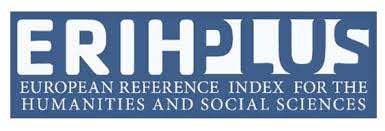‘Global Emblems’ and ‘Transmission and Intermediality: the impact of the emblematic culture on the early Americas’
DOI:
https://doi.org/10.17398/2660-714X.40.113Keywords:
Emblem, Displayed Emblem, Ibero-America, jeroglifico, Interme-diality, Cultural History, Digital HumanitiesAbstract
This white paper briefly outlines two co-dependent research initiatives: ‘Global Emblems’ and ‘Transmission and Intermediality: the impact of the emblematic culture in Ibero-America’. Both projects are in their initial stage of development, at Brown University.
▪ ‘Global Emblems’ is set to map, document and study the presence of emblems in material culture, around the world, and cross-link these occurrences with pre-existing digital collections of emblem books. The database will be fed by an international network of specialists, which is already active, with members in over ten countries and the support of the Society for Emblem Studies. The platform will allow searches by concepts (using Iconclass classification system) and a number of locations will allow users to ‘visit’ them through Virtual Reality (360 annotated photos). The database will be systematically studied through ‘thematic clusters’.
Although at first glance the focus on emblems may seem narrow, emblems have a broad geographical and historical spread, which can be traced, and that provides the necessary data for the kind of analytical and interpretative study required in the second research initiative, which illustrates the importance of emblems within the wider frame of Latin American cultural history.
▪ ‘Transmission and Intermediality: the impact of the emblematic culture on the Early Americas’ will analyse the data from ‘Global Emblems’ in order to understand the role of emblems in the colonial process in the Americas. More specifically, this project will look at the ‘pictorial dispute’ in the New World, by examining the ‘pictorial turn’ from the ‘catecismos jeroglíficos’ to the displayed emblems in the 17th-century (many of them resulting from the remediation of European prints), and the ideological, political and sociological implications around the presence of these emblems in buildings and early-modern festivals.
Downloads
References
BURKE, P., Cultural Hybridity. Cambridge, Polity Press, 2009.
DALY, P. and BÖKER, H.J., The Emblem and Architecture: Studies in Applied Emblematics from the Sixteenth to the Eighteenth Centuries (Imago Figurata. Studies, 2), Turnhout, Brepols, 1999. DOI: https://doi.org/10.1484/M.IFSTU-EB.5.112089
DALY, P. and DIMLER, G. R., The Jesuit Emblem in European Context, Philadelphia, Saint Joseph's University Press, 2016.
GRUZINSKI, Serge, Images at War: Mexico from Columbus to Blade Runner (1492–2019), Durham, NC, Duke University Press, 2001. DOI: https://doi.org/10.1215/9780822383116
HÖPEL, I. (Red.), Architektur als Ort für Embleme, Beiträge zu einer Tagung des Kunsthistorischen Instituts der Christian-Albrechts-Universität zu Kiel am 26.01.2013 (Mundus Symbolicus, 2), Kiel, Verlag Ludwig, 2014.
LEAL, P. G., «Os Hieróglifos do Novo Mundo: das escritas indígenas à chegada dos ‘jeroglíficos’ hispânicos», in LEAL, P. G. and GARCÍA ARRANZ, J. J. (ed.), Jeroglíficos en la Edad Moderna: Nuevas Aproximaciones a un Fenómeno Intercultural (Special Issue of Janus: Estudios del Siglo de Oro), La Coruña, Universidade da Coruña, 2020. pp. 257-330.
LEAL, P. G. with AMARAL Jr, R. (ed.), Emblems in Colonial Ibero-America: to the New World on the Ship of Theseus (Glasgow Emblem Studies), 18, Geneva, Droz, 2017.
MIGNOLO, W., The Darker Side of the Renaissance: Literacy, Territoriality, & Colonization, Ann Arbor, University of Michigan Press, 1995.
MÚJICA PINILLA, R., «Pedro Germano Leal, ed. Emblems in Colonial Ibero-America: To the New World on the Ship of Theseus» (review). Renaissance Quarterly, volume 71, number 4, Winter 2018, pp. 140-147. DOI: https://doi.org/10.1086/702066
RAWLES, S., «A spine of information headings for emblem-related electronic resources», in WADE, M.R. (ed.), Digital Collections and the Management of Knowledge: Renaissance Emblem Literature as a Case Study for the Digitization of Rare Texts and Images, Salzburg, DigiCULT, 2004.













